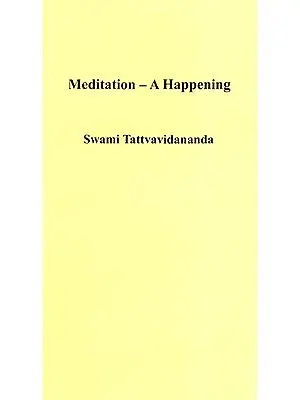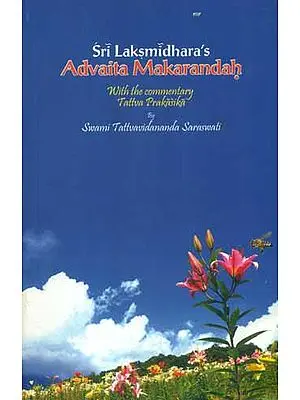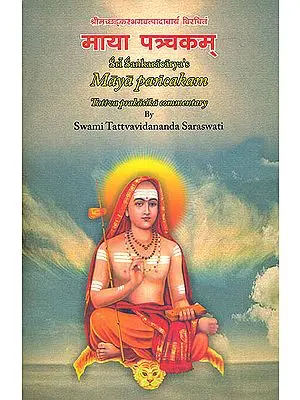The Dhanyashtakam is a short treatise, in which Sri Sankara examines the true nature of dhana or wealth, and describes the characteristics of those who are worthy of being called dhanyah or truly wealthy. This text is indeed one of the finest examples of Sri Sankara’s use of the medium or subject to reveal the entire vision of Vedanta. In this book, Swami Tattvavi-dananda presents a detailed examination of the verses and offers critical insights into some of the significant features of Sri Sankara’s teaching. Swamiji highlights the most beautiful aspects of Sri Sankara’s composition, in terms of both poetic form and content, to help the reader understand and appreciate every facet of this text. In the course of explaining these verses, Swamiji takes the time to delve into some of the deeper truths of the Vedantic wisdom, to reiterate the foremost instructions of the Upani-shads.
There are many questions that often occur in the mind of the seeker: what does it mean that I am innately divine? What is the difference between religion and spirituality? How is it even possible to act without anticipating a certain result? Or even; What is that knowledge, in knowing which everything is as well known? Swamiji addresses these and many other such questions, in the course of exploring the verses of the text.
In this book, Swami Tattvavidananda presents a detailed examination of the verses and offers critical insights into some of the significant features of Sri Sankara’s teaching. The text deals with a familiar subject and addresses notions that everyone can relate to and Swamiji effectively brings the truths contained in these verses within the scope of the one who seeks the knowledge. The teaching is exhaustive and Swamiji deals with the topic with exceptional skill, paying close attention to the substantial cross – references in these verses. along the way he also highlights the most beautiful aspects of Sri Sankara’s composition, in terms of both poetic form and content, to help the reader understand and appreciate every facet of this text. In the course of explaining these verses, Swamiji takes the time to delve into some of the deeper truths of the Vedantic wisdom, to reiterate the foremost instructions of the Upanishadas. This exposition can only be said to be thorough and complete.
What sets this book apart from other similar explanatory tracts is that here the teaching does not remain in the realm of intellectual concepts and definitions. Swamiiji’s point is that the pursuit of knowledge belongs in the here and now, and he uses the context of these verses to stress the importance of spiritual study. He describes the attitude and lifestyle that promote spirituality, as well as the qualities that must be cultivated by an earnest seeker; this gives the pursuit of Vedanta a kind of immediacy, which assures the reader that Self-realization is not an academic exercise. More importantly, one not only comes to know what must be accomplished in order to gain the knowledge, but also the way in which he or she must go about it.
There are many questions that often occur in the mind of the seeker: what does it mean that I am innately divine? What is the difference between religion and spirituality? How is it event possible to act without anticipating a certain result? Or even: what is that knowledge, in knowing which everything is as well known? Swamiji addresses these and many other such questions, in the course of exploring the verses of the text. As he puts it, the study of the text is an ‘expedition of knowing,’ which must continue until the truth is understood. His explanation of what it means that God is within oneself will help the reader to comprehend the need or necessity for Self-knowledge. Another topic that will be found to be particularly useful is that of worship. The discussion considers every aspect of worship, such as the need for prayer, the many modes of worship, the nature of temple worship, the multiplicity of gods and forms, etc., in a very forthright manner. Here, again Swamiji offers constructive suggestions regarding the importance and true purpose of worship, the proper way to worship, and the appropriate attitude to have in worship, which the reader will find very helpful.
While he teaches the verses of the Dhanyastakam, swamiji misses no opportunity to enhance the seeker’s knowledge of other relevant topics. He stresses that that one must ultimately become a spiritual entity from being a worldly entity or a religious entity. With an attitude of uncompromising sincerity towards the spiritual pursuit, he declares, “There is but one way and one approach that is the most appropriate and every other follows the dictates of convenience.” This attitude is especially evident in the discussion on the topic of likes and dislikes, where Swamiji cautions that the slightest degree of compromise in managing one’s impulses indicates that the bar of expectations in set too low. He also provides practical and simple instructions to help the sincere seeker achieve spiritual growth. These pointers enable us to identify the signs and pitfalls of samsara, so that we may become better prepared to guard against them. Such guidance also helps us recognize common behaviours and psychological dependencies that perpetuate samsara, so that we may avoid them. As Swamiji himself says, Vedanta is not about giving up anything; it is about living more wisely.
I have enjoyed working on this book along with Swamiji. It has proved to be a rewarding and enriching experience, and I thank him for this opportunity.











Reviews
There are no reviews yet.